Stem Cell Therapy in Chicago
Search and Compare the Best Clinics and Doctors at the Lowest Prices for Stem Cell Therapy in Chicago
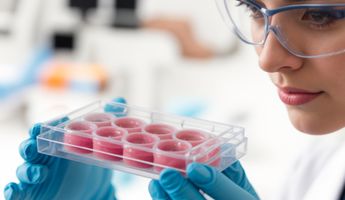
Find the best clinics for Stem Cell Therapy in Chicago
No pricing info available
Malaysia offers the best prices Worldwide
Price: $ 530
From 136 verified reviews
Yesenia Ortiz, 22 September 2020
Excellent service and expertise. Dr. Goldberg was thorough and supportive with my treatment options and decision.
From 57 verified reviews
Joseph Young, 18 April 2020
This was my second appointment at the Clinic and I could not been any happier I have a schedule for surgery and I’m so excited after year and a half looking and trying to find a doctor like Dr Bomd M.D nothing better than having a light at the end of the tunnel I cannot wait to get my hip repaired 💯% Thanks for taking the time to read this Joseph Young
- Home
- United States
- Chicago
Compare Before & After Photos of _procedure_photos.phpStem Cell Therapy
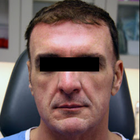
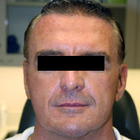
Front view


Front view
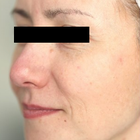
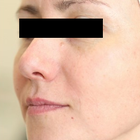
Half-side view
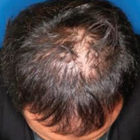
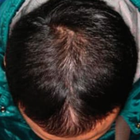
Front view

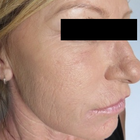
Half-side view
WHY US?
At Medijump, we're making medical easy. You can search, compare, discuss, and book your medical all in one place. We open the door to the best medical providers worldwide, saving you time and energy along the way, and it's all for FREE, no hidden fees, and no price markups guaranteed. So what are you waiting for?

Free

Best Price

Widest Selection

Risk-Free
What you need to know about Stem Cell Therapy in Chicago
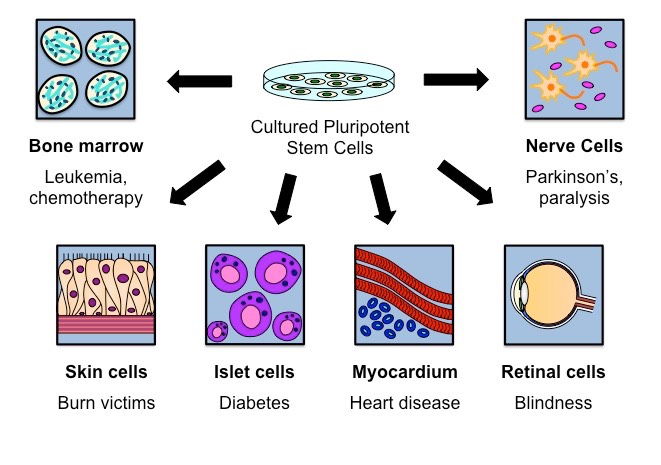
Stem Cell Therapy involves the use of stem cells to treat different diseases. These are non-differentiated cells of a multicellular organism. All the cells in the body are specialized for a specific function but they are the only cells without an assigned function. They can differentiate into any type of cell as and when required by the body and can proliferate rapidly to produce multiple copies of a specific type. Sources of stem cells are embryos and adult body tissues. In the adults, stem cells are present in bone marrow, brain, liver, skin, skeletal muscles, blood and blood vessels. While embryonic stem cells are derived from a blastocyst. Nowadays, the Umbilical cord is being stored under suitable conditions to get stem cells from it if needed. This is useful as chances of transplant rejection are less because stem cells are derived from your own umbilical cord.
Bone Marrow Transplant is the most commonly used method to treat various types of cancers such as lymphoma, multiple myeloma, and leukemia, etc. through stem cells. It is also used to treat brain diseases, cardiovascular diseases and cell deficiencies such as diabetes mellitus. Recently, anti-aging stem cell treatments have gain fame. It is used to restore your youth and beauty.
What is the cost of Stem Cell Therapy in Chicago?
The price of stem cell therapy, also known as Stem Cell Therapy, can fluctuate greatly based on factors like the intricacy and specifics of the procedure, the particular health issue being addressed, and the geographic site of the therapy center or clinic. When compared to conventional therapies, stem cell therapy's cost tends to be rather steep.
Yet, when considering the prospective benefits and potential long-term economic advantages, an increasing number of patients are choosing this therapeutic approach. It's crucial to mention that, although certain health insurance firms may cover the expenses of stem cell therapy for specific situations, a number of them do not due to the considerate speculative aspect of the therapy.
What does a Stem Cell Therapy Procedure Involve?
The procedure of stem cell therapy starts with removing stem cells from your body or from the donor’s body. The cells are collected from different body parts depending upon the need. After collection, the cells are processed according to the purpose for which they are extracted. The processed stem cells are injected into the specific area of your body using ultrasound or X-ray guidance. Anesthetics are used and the procedure is done under sterile conditions. It is necessary to make sure that the cells are reaching the desired area so that the improvement is better and quicker. There are three types of stem cell transplant:
- Autologous transplant - your own body stem cells are removed and used. This type of transplant is safer and recovery is quicker because chances of transplant rejection are less as your own stem cells are being used.
- Allogenic transplant - stem cells are obtained from a suitable donor. Matching is done to find a donor whose white cell antigen closely resembles yours. The donor can or cannot be your relative.
- Syngeneic transplant - stem cells from your identical twin are used. In this case, the chances of rejection are low.
Each type of stem cell transplant involves different methods, procedures, and techniques with different side effects and risks. The one suitable for you depends upon your age, health, and physical conditions.
How Long Should I Stay in Chicago for a Stem Cell Therapy Procedure?
The length of stay in the hospital varies in accordance with the condition for which stem cell therapy is being done. It is usually a 3 to 4 hours procedure (in-patient) in which stem cells are introduced into the body using syringes or catheters. Different factors are considered to decide the length of your stay in the hospital. These factors are:
- You are not suffering from a fever for the last 24 to 48 hours.
- You have a safe blood cell count.
- You are able to eat and drink.
- Your symptoms such as nausea, vomiting, and diarrhea are under control.
- You have someone with you to look after you.
Your stay in the hospital is longer for an allogeneic transplant as compared to an autologous transplant and you're free to leave Chicago the very next day, although it's advised to stay at least a few days in case you have further questions for the medical staff. But of course, these can be asked over the phone/email or directed towards your local medical team back home.
What's the Recovery Time for Stem Cell Therapy Procedures in Chicago?
Complete recovery time varies from 2 to 12 weeks when the patient begins to feel pain relief. However, you can return to your routine work a couple of days after going through the transplant. Recovery depends upon your physical condition before and after the transplant. Over a period of 6 to 12 months, further improvements are seen in the patients. During the process, antibiotics and other drugs are prescribed. These drugs prevent transplant rejection and graft-host diseases. Allogenic stem cell transplant takes longer to recover than an autologous transplant.
What sort of Aftercare is Required for Stem Cell Therapy Procedures in Chicago?
It is advised to keep in contact with your doctor and to visit them on a regular basis. Apart from this, the following points should be considered:
- Minor pain will be present after going through the therapy - icepacks are effective in this regard. Pain might either be because of inflammation or muscle spasm. Inflammation is common due to your immune system activity. Anti-inflammatory medicines are avoided in the initial period because they can interfere with the healing process.
- Walking is good for your health. Rest is not always the best option for quick recovery. Blood flow and oxygen is needed by the treated area which is provided by light activity and movement.
- Ask your doctor about your nutritional requirements and eat healthy according to it.
- Do some joint stabilizing exercises to aid the healing process.
What's the Success Rate of Stem Cell Therapy Procedures in Chicago?
Stem cell therapy's effectiveness, also known as Stem Cell Therapy, can change based on the illness, the age and health of the patient, and the type of therapy used. Although new, stem cell therapy has shown promise in areas like bone, brain, and heart health, it is not always successful due to various reasons, one being the transplant rejection. It is an excellent idea to talk about the possible good and bad outcomes with your doctor before making a choice.
Are there Alternatives to Stem Cell Therapy Procedures in Chicago?
Exosomes are being used as an alternative to stem cell therapy. They are lipid bilayer surrounded vesicles secreted by live cells. They contain mRNA, proteins, chaperons, and various signaling molecules. They work as a natural carrier system for the transport of these substances. They function as a messenger within the body carrying information from one cell to the other. Stem cell therapy can be enhanced using exosomes. They help the body’s natural healing ability to increase the pace of recovery. Sometimes, stem cell therapy and exosomes are given together for better results.
What Should You Expect Before and After the Procedure
Before you proceed with the Stem Cell Therapy, it's typical to have a meeting with your medical professional to examine your unique situation, the potential advantages and drawbacks of the process, and your overall wellness. This discussion will help determine if stem cell therapy is suitable for you. Comprehensive diagnostic evaluations may be necessary to fully examine your health status. The medical professional will guide you through the procedure, describing how the treatment is carried out, what it involves, and what to anticipate. The significance of regular physical activity and keeping a balanced lifestyle before the procedure to boost the effectiveness of the treatment shouldn't be overlooked.
Following the completion of the Stem Cell Therapy, you might feel a slight discomfort, redness, or swelling at the injection site, which typically subsides within a few days. Keep in mind that the recovery process post-procedure may take several weeks or months, as the reinstated stem cells function to fix and reconstruct the damaged tissues. Therefore, a degree of patience may be necessary before noticing the advantages of the treatment. Regular follow-up appointments with your medical professional to monitor your body's reaction to the treatment, assess progress, and control any possible side effects, are necessary. Reinforcing healthy habits such as a balanced diet, frequent physical activity, sufficient sleep, and stress control are crucial components of the post-procedure care.
What are Potential Risks of Stem Cell Therapy?
As with any medical intervention, Stem Cell Therapy is not devoid of risk. However, given that the patients' own cells are generally used, the chance of rejection or allergy is quite low. Possible complications may encompass infection, hemorrhage, or an adverse response to the anesthesia utilized during the operation. Moreover, while stem cells possess the extraordinary capacity to transform into various cell types in the body, there is a possibility they could proliferate without control, leading to the formation of tumors. Nevertheless, such instances are incredibly infrequent and are chiefly linked with embryonic stem cells, rather than the adult stem cells usually employed in the majority of Stem Cell Therapy procedures.
What are the Long-Term Effects of Stem Cell Therapy?
The enduring impacts of stem cell treatment, a fairly recent medical specialty, continue to be probed by scientific research. Nevertheless, some scholarly investigations propose that such a treatment method could offer a sustainable easing of symptoms and potentially decelerate the advancement of particular ailments. The influence of this therapeutic approach differs significantly among individuals and is significantly dependent on factors such as a person's comprehensive health status, the kind and gravity of the disease under treatment, and the specific treatment regimen pursued.
Whilst the information presented here has been accurately sourced and verified by a medical professional for its accuracy, it is still advised to consult with your doctor before pursuing a medical treatment at one of the listed medical providers
No Time?
Tell us what you're looking for and we'll reachout to the top clinics all at once
Enquire Now

Popular Procedures in Chicago
Prices Start From $273

Prices Start From $2,000

Prices Start From $126

Recommended Medical Centers in Chicago for Stem Cell Therapy

- Interpreter services
- Translation service
- Religious facilities
- Medical records transfer
- Medical travel insurance
- Health insurance coordination
- TV in the room
- Safe in the room
- Phone in the room
- Private rooms for patients available

- Interpreter services
- Translation service
- Religious facilities
- Medical records transfer
- Medical travel insurance
- Health insurance coordination
- TV in the room
- Safe in the room
- Phone in the room
- Private rooms for patients available

- Interpreter services
- Translation service
- Religious facilities
- Medical records transfer
- Medical travel insurance
- Health insurance coordination
- TV in the room
- Safe in the room
- Phone in the room
- Private rooms for patients available
Stem Cell Therapy in and around Chicago
About Chicago
The city of Chicago is the third-most populous city in the United States of America, with a population of over 2.7 million people. The city is located on the southwestern shores of Lake Michigan and is known as the “Windy City.” It is an international hub for culture, finance, commerce, technology, telecommunications, transportation, and industry. The city offers visitors a wide range of things to do. Whether you want to dine in its exquisite restaurants, have fun in the jazz clubs, wander around the green space, admire its architectural beauty, or go shopping. The city also provides top-notch medical centers that attract medical tourists from around 140 countries, especially from the Middle East region. These medical centers have world-class specialists and advanced technologies. Many patients come for cancer, orthopedic, or other complex treatment that they might not be able in their home country.
Popular Areas in Chicago
- Millennium Park is one of Chicago’s most popular attractions located on Michigan Avenue. Here, tourists can discover a collection of architecture, art, and landscape design. The park includes Pritzker Pavilion, an amazing silver bandshell that hosts free weekly concerts every summer; Cloud Gate ‘the Bean’ mesmerizing silvery sculpture; Crown Fountain, an imperative work of public art and video sculpture; McCormick Tribute Ice Rink for skaters in the winter; and the tranquil Lurie Garden filled with stunning flowers.
- Art Institute of Chicago was founded in 1879 and is the oldest museum in the city. It houses more than 300 thousand pieces of art and has the largest collection of Impressionist and Post-Impressionist art outside the Louvre. Tourists can get intimate views of some of the world’s most popular artworks, from Pablo Picasso’s The Old Guitarist to Etruscan pottery. Other important artworks in the museum’s permanent collection include Nighthawks by Edward Hopper, American Gothic by Grant Wood, Rainy Street; Rainy Day by Gustave Caillebotte, and Day of the God by Paul Gauguin.
- Navy Pier was initially constructed as the world’s largest pier in 1914. It was built for shipping and entertainment. During World War II, the pier serves as a training place for pilots. Today, it has become a famous location for tourists to enjoy the cool breeze from the lake. Ride the Centennial Wheel which offers an astounding view of Chicago. The pier also hosts seasonal fireworks and concerts. Tourists can also find public arts on the pier, such as the Captain of the Helm Statue, Bob Newhart Statue, and Crack the Whip Statue.
- Wrigley Field is located on the North Side of Chicago. It is the home to one of the city’s Major League Baseball franchise, the Chicago Cubs. Fans of baseballs will be happy to visit and watch a game here. It was built in 1914 and is one of the oldest major league ballparks. It was the first ballpark to let fans keep foul balls.
Weather and Climate in Chicago
Chicago experiences four distinct seasons.
- Spring is from April to June. The temperatures are good and enjoyable, making it the best time to visit the city. The average high in May is around 21°C. However, keep in mind that rain showers can occur.
- Summer starts in July and ends in August. The weather can be hot and humid, especially in August. The city is filled with tourists and families during this season.
- Autumn starts in September to November and the weather is at its best in September, and there are fewer crowds in this season. The temperatures will slowly decrease, sometimes dipping to 4 °C at night.
- Winter will start from late November to March. The winter is cold and snowy, but December is known to be a wonderful time to visit the city because many holiday events and festivals transform the city into a winter wonderland.
Getting Around in Chicago
O’Hare International Airport is the 3rd busiest airport in the United States. It serves domestic and international flights to many cities in the world, including London, Shanghai, Delhi, and Auckland. Low-cost carriers, such as Frontier Airlines, JetBlue, and Spirit Airlines, are a good and affordable option to travel to and from Chicago.
Traveling around Chicago is fairly easy since the city has numerous public transportations. The buses and trains are operated by the Chicago Transit Authority (CTA) and they are fast and inexpensive. The trains are known as the “L” trains and it is best to buy a CTA Visitor passes, which has unlimited rides on all CTA trains and buses. A 1-day pass is $10, a 3-day pass is $20, and a 7-day pass is $28.
Taxis can be found easily throughout the city. They can get a bit expensive, but they provide a convenient way to get around the city. The fares depend on gas prices and the number of passengers. Apps like Lyft and Uber are more cost-effective and are plentiful.
Tourists Visas in Chicago
Visa exemption access is given to Canada, Marshall Islands, Micronesia, Palau, and Bermuda. Citizens of 38 countries (including Australia, Japan, Singapore, and the United Kingdom) are selected for the Visa Waiver Program. Citizens from other countries not listed in the visa exemption and visa waiver agreement are required to apply for a visa. Visitors may stay in the United States for 90 days. It is best to check the visa policy at the nearest United States Embassy.
Additional Information
- Local Currency: The official currency is the US dollar ($). For the current exchange rate to your local currency, check XE.com.
- Money & Payments: Tourists can easily find ATMs in almost every part of the city. Credit and debit cards are accepted in almost every restaurant, shop, and hotel. Tipping can be mandatory in Chicago, tipping at least 18% is generally expected in restaurants.
- Local Language: The main language is American English and many people can also speak Spanish.
- Local Culture and Religion: Christianity is the biggest religion in Chicago, followed by Islam and Judaism.
- Public Holidays: Some of the major public holidays in Chicago are New Year’s Day, Independence Day, Thanksgiving, and Christmas.
Popular Searches
- Plastic Surgery in Thailand
- Dental Implants in Thailand
- Hair Transplant in Thailand
- Breast Augmentation Thailand
- Gastric Sleeve in Thailand
- Gender Reassignment Surgery in Thailand
- Laser Hair Removal in Bangkok
- Botox in Bangkok
- Dermatology in Bangkok
- Breast Augmentation in Bangkok
- Coolsculpting in Bangkok
- Veneers in Turkey
- Hair Transplant in Turkey
- Rhinoplasty in Turkey
- Stem Cell Therapy in Mexico
- Rhinoplasty in Mexico
- Liposuction in Mexico
- Coolsculpting in Tijuana
- Rhinoplasty in Korea
- Scar Removal in Korea
- Gastric Sleeve in Turkey
- Bone Marrow Transplant in India
- Invisalign in Malaysia
- Plastic Surgery in the Dominican Republic
- Tummy Tuck in the Dominican Republic
- Plastic and Cosmetic Surgery in Poland
- Rhinoplasty in Poland
- Hair Implant in Poland
- Dental Implants in Poland
- IVF in Turkey

